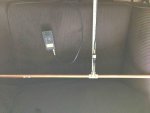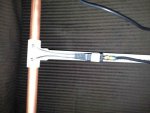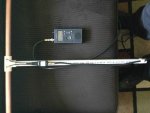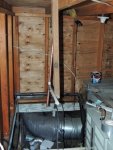JonDickson
Member
Hi all! Just finished making the OCFD from the RR wiki. I am just a guy that knows how to use a drill and a pipe cutter. I also enjoy scanning with my PSR800 and BCD396xt. Thought I would give this antenna a try and it was easy! Took longer to get the parts then it did to put them together. I mostly listen to the Portland Public Safety Radio System in Portland, OR and never have a problem hearing it. The signal is so strong, I could more then likely use a paperclip for an antenna! I wanted to make this because its something to do AND maybe I can pickup some new stuff. I am going to put it up in the attic and use some coax from an old DirecTv setup that is no longer in use.
That said, does anyone see any problems with my work? The plans are kind of basic, but I researched the forums for awhile and think I did it all right. Also, there is a signal booster/splitter up in the attic from an old TV antenna. Its a RadioShack Model: 1500321. Would it do me any good hooking up to it?
Thanks to everyone who reads this!
--Jon
That said, does anyone see any problems with my work? The plans are kind of basic, but I researched the forums for awhile and think I did it all right. Also, there is a signal booster/splitter up in the attic from an old TV antenna. Its a RadioShack Model: 1500321. Would it do me any good hooking up to it?
Thanks to everyone who reads this!
--Jon





